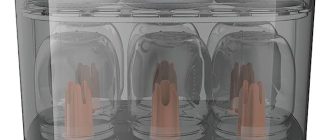Looking for parts?
Enter model number, part number, part type, brand, or part description and press Enter:

Energy Efficient Refrigerators – Parts and Resource
Since its introduction into mass market production after WW II, the refrigerator has consumed more energy in American homes than any other home appliance.
Over the last twenty years, this has been slowly changing.
Starting in the 1990’s, when a competition held among major US manufacturers encouraged progress in design and manufacture of refrigerators, improvements have been made towards greater energy efficiency.
Today’s Energy Star rated refrigerator models use 50 % less energy than the average 1974 models. The most energy-efficient refrigerator made in the US consumes about half a kilowatt-hour per day, but even ordinary units are much more efficient – some smaller units use less than 0.5 kilowatt-hour. Larger units, especially fancy models with large freezers and ice makers, are still energy hogs and may use as much as 4 kW·h per day.
Different styles of refrigerators vary in energy consumption:
- Top-freezer models are more efficient than bottom-freezer models of the same capacity and side-freezer models are less efficient still.
- Refrigerator units with through-the-door ice dispensers are less efficient than those without.
- Small, mini-refrigerators, are least efficient of all, because every time the door opens a large amount of cool air escapes, and the unit has to work hard to cool the warm air down.
- Most energy-efficient refrigerator models are those in 16-20 cubic foot sizes.
The efficiency of all refrigerators can be improved by these simple maintenance practices:
- Clean the refrigerator regularly
- Replace old and worn door seals with new ones

Door seals and gaskets for every refrigerator
- Adjust the thermostat to reflect the cooling need of the contents inside the unit
- Replace refrigerator insulation when needed

Refrigerator Insulation
- Replace refrigerator components like broken shelfs, bins, brackets, drawers, etc. when necessary

Refrigerator Door Shelf Bin
- Clean condenser coils four times a year on units that have coils on the rear

Refrigerator Condenser Coil Cleaning Brush
- Refrigerator should always have adequate breathing space around the front, back, sides and above the unit
- If your refrigerator uses a fan to cool the condenser cool, the fan needs to be cleaned annually and occasionally replaced

Refrigerator Fan Blade Parts
The US government offers tax credits and other incentives to encourage the purchase of energy efficient refrigerators, other appliances and many other home products.
If you already have an energy efficient refrigerator, keep it clean, well maintained, and replace the parts when the need arises. Visit this excellent appliance resource for refrigerator troubleshooting, diagnosing the problem, repair videos, maintenance information, parts and more.

Refrigerator Maintenance Video
Maintaining these large appliances well, repairing them when necessary and saving as much energy as we can, will benefit us all in the long run.
More refrigerator tips, information, parts, videos, etc.
![]()













